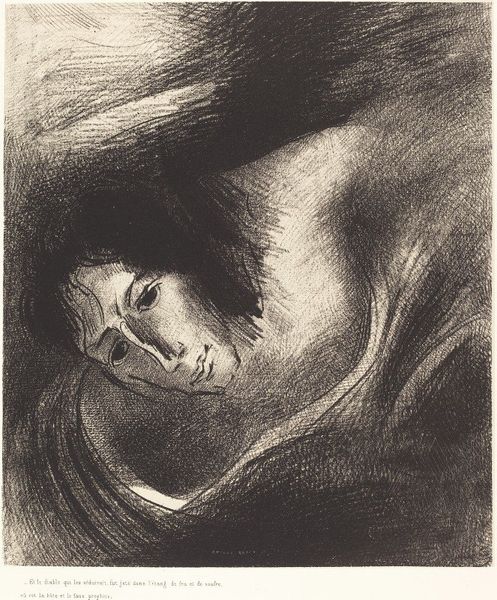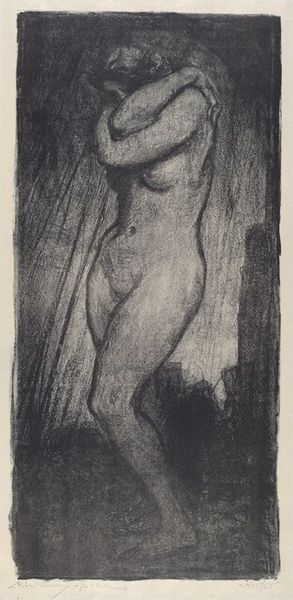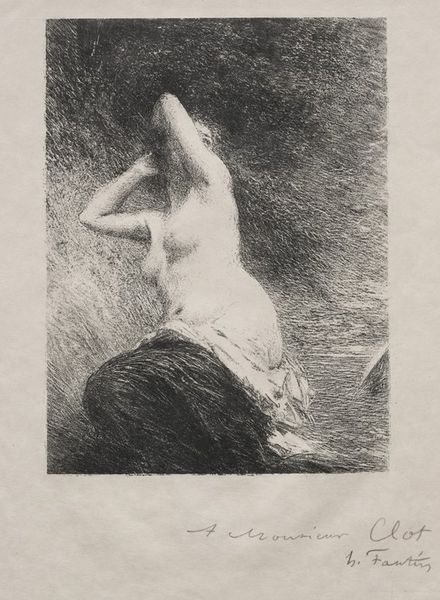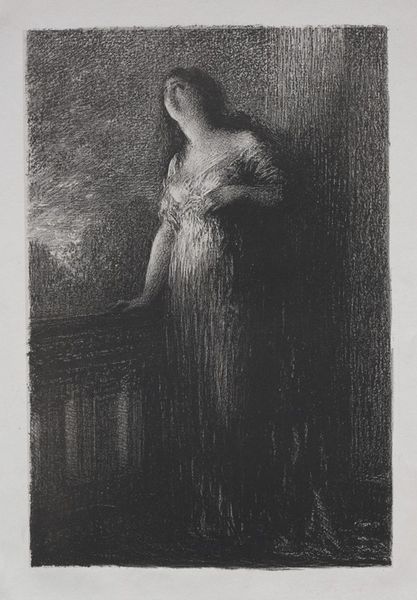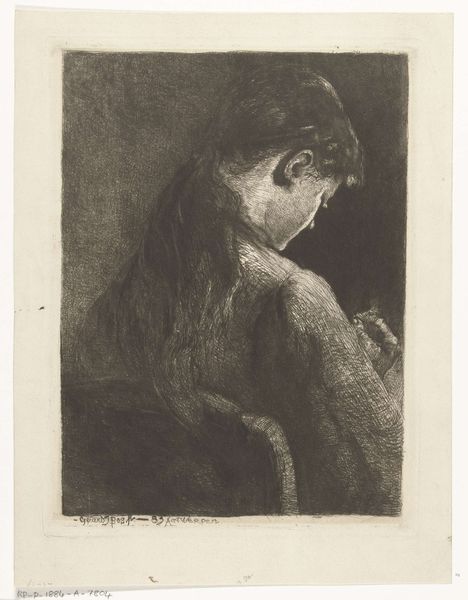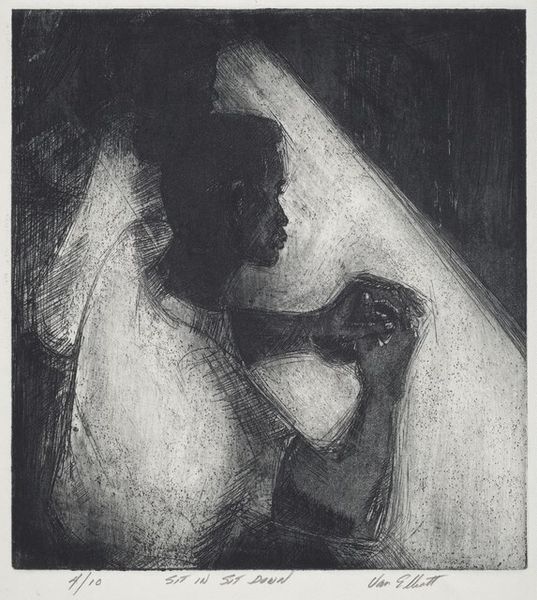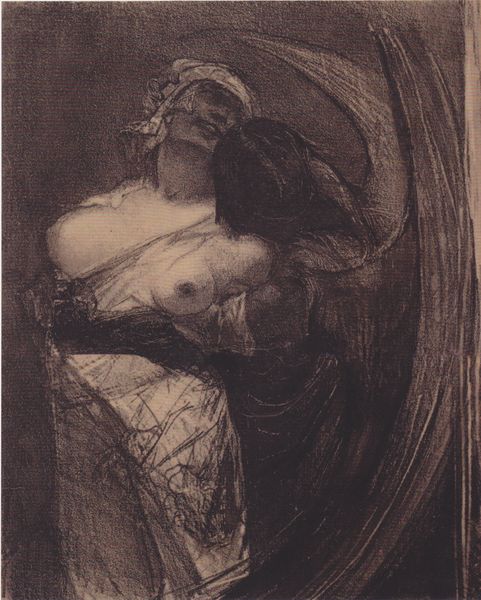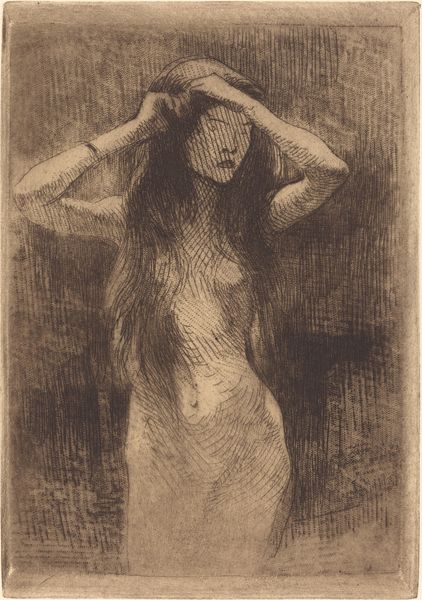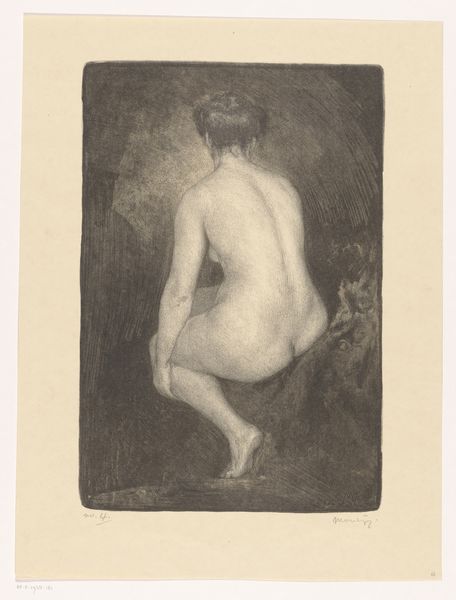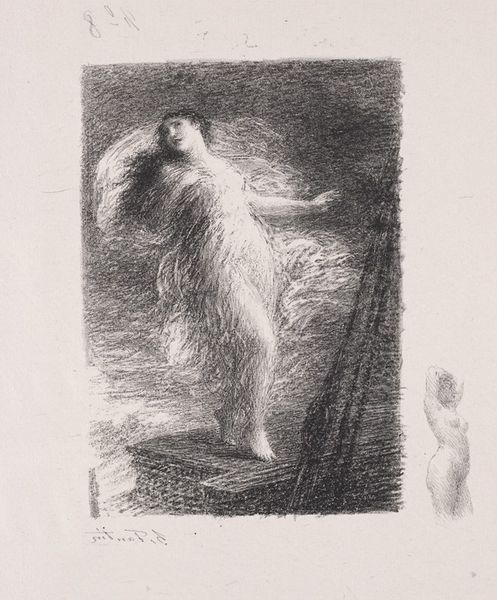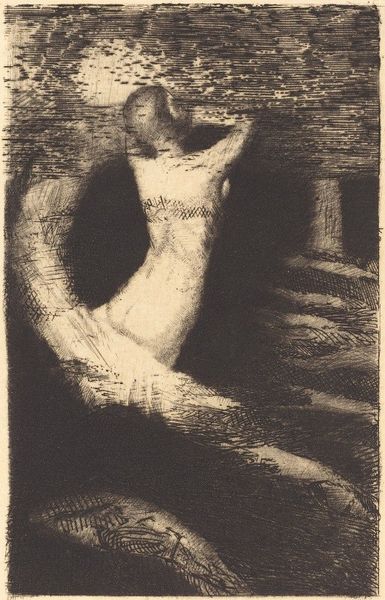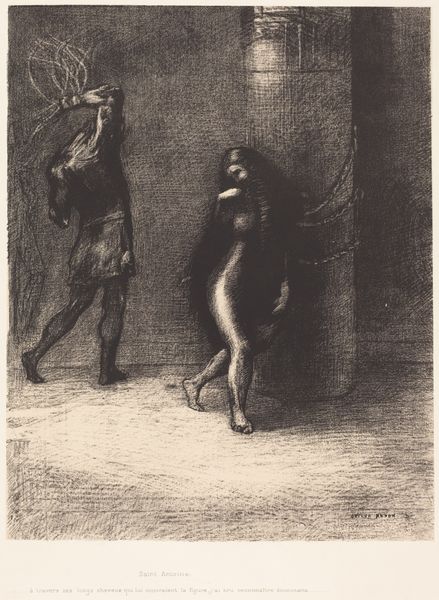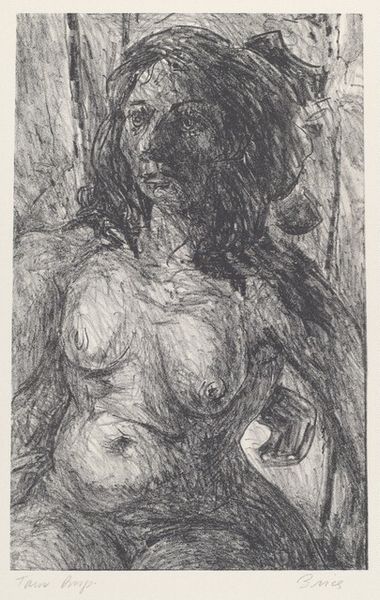
I am still the great Isis! None has yet lifted my veil! My fruit is the Sun! (plate 16) 1896
0:00
0:00
odilonredon
Museum of Modern Art (MoMA), New York City, NY, US
drawing, pastel
#
drawing
#
allegories
#
negative space
#
allegory
#
symbol
#
figuration
#
line
#
symbolism
#
pastel
#
nude
Dimensions: 28 x 20.3 cm
Copyright: Public domain
Editor: This is Odilon Redon's "I am still the great Isis! None has yet lifted my veil! My fruit is the Sun!" from 1896, a drawing and pastel piece. The figure is so shrouded in shadow, it almost feels like the drawing itself is resisting being seen. What do you see in this piece? Curator: I see a potent visual statement about the mystique and power historically attributed to femininity, particularly in its connection to nature and the sacred. Redon situates Isis, a powerful goddess, not merely as a figure to be passively admired but as an active agent who withholds her secrets. Consider the lines "None has yet lifted my veil"— this evokes the concept of the veiled woman in both art history and societal expectations. What does this concealment tell us about the gaze, power dynamics, and the era’s understanding of the feminine ideal? Editor: So, you're saying the shadow isn't just aesthetic; it's a statement? Curator: Exactly! It demands we question who controls the act of seeing and knowing. Redon pulls from the symbolist movement, where visible forms were valued less than interior visions and states of mind. Isis's darkness positions her beyond easy comprehension, beyond patriarchal control. Consider also her association with the Sun – a powerful, life-giving force, suggesting Isis as the origin of that force. Editor: That’s fascinating. I never considered the power dynamic of the unveiling. Curator: And the political context of the late 19th century: debates around women's suffrage, the rise of feminist thought. This piece invites us to connect Redon's artistic choices with broader cultural shifts. How does it challenge or reinforce traditional gender roles? Editor: I guess I hadn't thought of art from this time being so... vocal. I thought it was more about aesthetics. Curator: Aesthetics always carries ideological weight! Examining the power dynamics at play can deeply enrich our understanding of artistic expression and its relationship to social change. Editor: This really changes how I view this piece. Thanks!
Comments
No comments
Be the first to comment and join the conversation on the ultimate creative platform.
